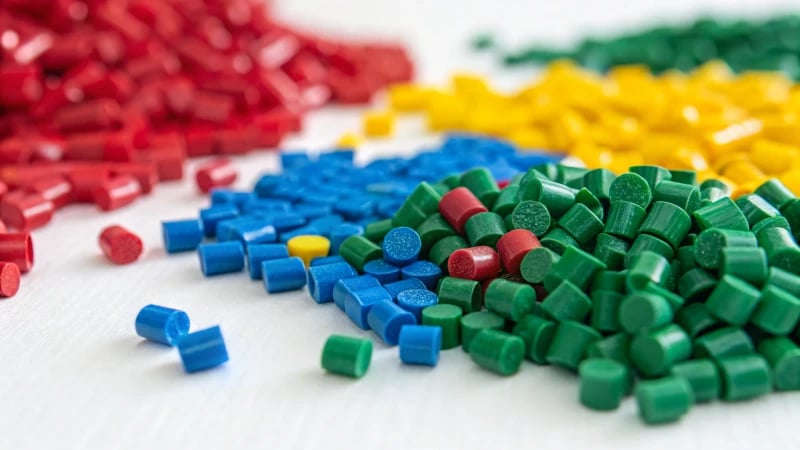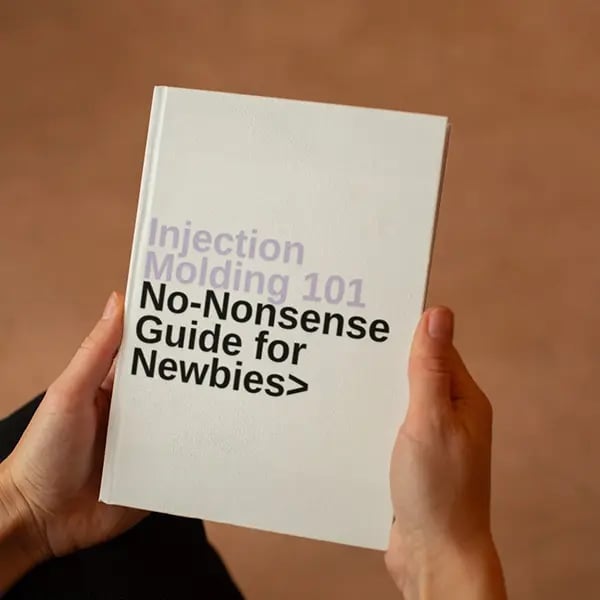
Ever wondered how to get those perfect, vibrant colors in your plastic products? It’s a game-changer for quality and appeal.
Ensure uniform color mixing in injection molding by using quality masterbatch colorants, optimizing temperature and pressure, maintaining consistent material flow, and conducting regular equipment calibration and inspections to identify and address inconsistencies.
I remember a time when I faced a frustrating issue with uneven color distribution. It was like painting a masterpiece with a brush that just wouldn’t cooperate! Through trial and error, I learned that the key lies not just in the materials but also in the meticulous tweaking of machinery settings and keeping a close eye on every batch. Whether you’re a seasoned pro or just starting out, these techniques can make all the difference, ensuring your final product not only meets but exceeds expectations.
High-quality masterbatch ensures uniform color mixing.True
Using high-quality masterbatch colorants is crucial for consistent color.
Regular equipment calibration is unnecessary for uniform mixing.False
Regular calibration prevents inconsistencies in the injection molding process.
How Do Masterbatch Colorants Ensure Consistent Colors in Manufacturing?
Have you ever wondered how the colors in plastic products stay so vibrant and consistent, like magic?
Masterbatch colorants provide consistent colors in plastic manufacturing by ensuring uniform pigment distribution, reducing costs, and enhancing appearance, thus maintaining product quality and aesthetics.

Understanding Masterbatch Colorants
Let me take you on a journey back to my early days in the mold industry, where I learned that achieving the perfect color in a plastic product is like crafting a masterpiece. Masterbatch colorants, with their concentrated pigments and additives, play the role of an artist’s palette. These are mixed into a carrier resin through a heat process, cooled, and then sliced into tiny pellets—little powerhouses of color. When added to raw polymer materials during the manufacturing process1, they work wonders in ensuring precise color matching and enhancing the visual allure of products.
Benefits of Using Masterbatch
| Benefit | Description |
|---|---|
| Cost Efficiency | Reduces costs by minimizing waste and using less pigment than powder or liquid forms. |
| Quality Control | Ensures uniform color throughout the batch, reducing defects and inconsistencies. |
| Ease of Use | Simple to incorporate into existing production lines without extensive modifications. |
Impact on Product Quality
Imagine creating a product that not only meets but exceeds quality expectations. Masterbatch colorants make this possible by preventing issues like color bleeding and streaking. They’re our secret weapon in preserving the aesthetic integrity designers like Jacky strive for, ensuring every item stands up to rigorous quality checks.
Role in Large-Scale Production
In my experience, maintaining consistency across thousands of units is critical, especially in large-scale manufacturing. Masterbatches offer a stable solution for colorant application, boosting efficiency and slashing downtime related to color adjustments2.
Choosing the Right Masterbatch
Selecting the right masterbatch is akin to choosing the perfect brush for a painting. Factors like desired hue, material compatibility, and environmental conditions come into play. By carefully picking the right mix, manufacturers can fine-tune their processes to achieve the best results. Delving into different suppliers3 can also shed light on quality and cost-effectiveness.
Masterbatch colorants reduce production costs.True
They minimize waste and use less pigment than other forms.
Masterbatch colorants cause color inconsistency in products.False
They ensure uniform color throughout the batch, reducing defects.
How Can Processing Conditions Affect Color Consistency?
Ever wonder why two batches of the same product sometimes look like they belong to different worlds? Let me walk you through how processing conditions can be the sneaky culprit behind color inconsistencies.
Processing conditions such as temperature, humidity, and mixing methods influence color consistency by affecting pigment dispersion and stability, altering the final product’s appearance.

Temperature’s Role in Color Stability
I remember the first time I learned just how much temperature could mess with color stability. It was during a particularly hot summer in Toronto when our production line was churning out components that varied wildly in color. Turns out, the heat was affecting the viscosity of our materials, causing pigments to shift. High temperatures can degrade pigments or cause them to drift, leading to inconsistencies. Maintaining stable temperature control4 is essential to avoid these issues.
| Temperature Impact | Effect on Color |
|---|---|
| High | Possible fading or shift |
| Low | Poor pigment dispersion |
Influence of Humidity Levels
Humidity was another eye-opener for me. One rainy day, I noticed that our normally vibrant colors looked unusually dull. High humidity levels had caused the materials to absorb moisture, making pigments swell and disperse unevenly. By managing humidity with dehumidifiers or controlled environments, we could ensure more consistent color results.
Managing humidity5 through dehumidifiers or controlled environments is essential for color consistency.
Mixing Techniques for Uniform Color
I’ve had my fair share of mixing mishaps too. I remember one time when manual mixing resulted in streaks across a batch of sleek phone cases we were producing. It was a learning moment about how proper mixing techniques are crucial for achieving even pigment distribution.
| Mixing Method | Pros | Cons |
|---|---|---|
| Manual | Simple setup | Inconsistent results |
| Mechanical | Consistent, efficient | Initial investment |
While manual methods are simple, mechanical mixing offers consistency and efficiency, despite the initial investment needed for advanced mixing technologies6.
Material Variations and Their Impact
Different materials each have their own quirks. I found that out when we switched from plastic to silicone for a project, only to discover that the same processing conditions didn’t work. Silicone required a different approach to achieve the same color consistency as plastics.
Understanding these factors and how they interact with the materials you’re working with is key to ensuring your production batches consistently hit the mark with color. Dive deeper into material properties7 to better align your processes with what you envision.
High temperatures cause pigment fading.True
Elevated temperatures can degrade pigments, leading to fading.
Manual mixing ensures uniform color.False
Manual mixing often results in inconsistent pigment distribution.
How Can You Troubleshoot Color Inconsistency in Injection Molding?
Ever wondered why your plastic parts sometimes look like they’re from different planets? Let’s unravel the mystery of color consistency in injection molding together.
To troubleshoot color inconsistency in injection molding, focus on material selection, machine settings, and mold design. Regularly calibrate equipment and maintain optimal temperatures for consistent color results.

Understanding Material Impact
I’ve been there—those moments when you’re staring at a batch of parts that seem to have their own unique shades. It all starts with the material selection8. I remember once using resin from different batches, thinking it wouldn’t matter much. But, oh boy, was I wrong! Even slight variations can throw off the entire color scheme. Now, I always ensure I’m using the same lot for critical productions, and consistent additives have become my best friends.
Machine Settings
You know that feeling when you’re trying to balance everything just right? That’s how I approach injection speed, pressure, and temperature. It feels like juggling sometimes, but keeping a baseline of these parameters has saved me more times than I can count. Whenever a color inconsistency pops up, it’s like a mini-investigation to compare current settings with my baseline. Adjusting things like the injection pressure9 or temperature usually does the trick.
| Parameter | Ideal Setting |
|---|---|
| Injection Speed | Consistent, medium |
| Pressure | Stable, as required |
| Temperature Range | 190-230°C |
Mold Design Factors
Mold design can be a real puzzle sometimes. I’ve learned that complex shapes can lead to uneven cooling or distribution of material, messing with the color. Once, redesigning a mold completely turned things around for me. And let’s not forget regular maintenance—clean molds keep everything running smoothly and reduce those pesky contamination issues.
Importance of Equipment Calibration
Honestly, calibrating equipment was something I used to overlook. But once I realized how crucial it is for consistency, it became part of my routine. Regular calibration keeps machines humming along within defined parameters, reducing the likelihood of color inconsistency. My calibration checklist10 is now my go-to tool.
Exploring Environmental Factors
Believe it or not, the environment plays a huge role. I’ve seen how humidity and ambient temperature can impact the molding process firsthand. Keeping the production environment controlled has prevented many unwanted variations in my work.
By keeping an eye on these factors and implementing regular checks, I’ve managed to significantly reduce color inconsistencies in injection molding. Consistent monitoring and adjustments have become my mantra for maintaining high-quality standards.
Material selection impacts color consistency in molding.True
Different resin batches may have slight color variations, affecting consistency.
Machine settings do not affect color consistency.False
Injection speed, pressure, and temperature significantly influence color outcomes.
Conclusion
Achieve uniform color mixing in injection molding by using high-quality masterbatch, optimizing processing conditions, and maintaining equipment calibration to enhance product quality and consistency.
-
Discover how masterbatch integrates into manufacturing to enhance product quality with consistent color distribution. ↩
-
Learn why masterbatch is crucial for efficiency and quality in large-scale manufacturing. ↩
-
Explore different suppliers for quality and cost-effective masterbatch solutions. ↩
-
Learn how temperature fluctuations impact pigment dispersion and color consistency in manufacturing. ↩
-
Explore effective methods for controlling humidity to maintain color consistency in production. ↩
-
Discover cutting-edge mixing technologies that ensure uniform pigment distribution. ↩
-
Understand how different materials affect color consistency and how to manage them effectively. ↩
-
Material selection can greatly impact color consistency. Understanding its effect helps optimize processes for uniform results. ↩
-
Injection pressure changes can cause color variations. Learning more helps maintain desired outcomes. ↩
-
Regular calibration ensures equipment accuracy, crucial for achieving consistent product quality. ↩






